Male Masturbator Materials Safety—Deep Dive
Male Masturbator Materials Safety (Deep Dive)
📖 Reading time: 18 minutes
Folks, choosing a masturbator isn't just about texture or price—the material fundamentally determines safety, maintenance requirements, longevity, and how it feels against your skin. Walk into any adult retailer or browse online, and you'll encounter confusing terminology: TPE, TPR, silicone, platinum-cure, FantaFlesh, CyberSkin, Real Feel. Some of these are specific materials with defined properties; others are marketing names for proprietary blends. The consequences of picking the wrong material for your needs range from minor annoyances (sticky surfaces, persistent odors) to legitimate health concerns (irritation from questionable additives, bacterial growth in poorly maintained porous materials).
This comprehensive guide cuts through the marketing language to explain what these materials actually are, how they differ in porosity and safety, which lubricants they're compatible with, and what realistic care looks like for each type. You'll learn to evaluate manufacturer claims, recognize red flags in material composition, and make informed decisions that balance texture preferences with hygiene requirements. Whether you're prioritizing ultra-soft realism or low-maintenance durability, understanding material fundamentals empowers better purchasing choices and safer long-term use.
Before diving into material specifics, familiarize yourself with foundational concepts in our comprehensive rankings guide and complete buying guide. Understanding how materials fit into the broader selection process helps you make integrated decisions rather than optimizing for material alone.
Quick Answer: For safest care and longevity, choose non-porous silicone when possible and pair with water-based lube. TPE/TPR and proprietary blends (e.g., FantaFlesh, CyberSkin) are porous: clean gently, air-dry cores fully, and store separately. Avoid harsh chemicals and silicone lube on silicone. If irritation occurs, stop and reassess material and lube. Use dedicated toy cleaners for best results.
🎯 Key Takeaways
- Non-porous silicone is safest: Bacteria cannot penetrate surface; easier to clean thoroughly; lasts 2-5 years with proper care. Requires water-based lube only.
- TPE/TPR are porous: Bacteria can colonize microstructure; require meticulous cleaning, complete drying (5-6 hours), and renewal powder. Softer feel but higher maintenance.
- Proprietary blends (FantaFlesh, CyberSkin) are TPE-family materials: Ultra-realistic texture but same porous structure and care requirements. Shorter lifespan (6-18 months typical).
- Water-based lube works universally: Safe for all materials. Never use silicone lube on silicone toys—causes permanent damage. Avoid oil-based lubes on all sleeves.
- Complete drying prevents odor: Silicone: 3-4 hours. TPE/TPR: 5-6 hours minimum. Store with caps slightly open. Never seal while damp.
- Replace when compromised: Persistent odor after deep cleaning, sticky surface despite powdering, visible cracking/tears, or unusual discoloration indicate material degradation.
📋 Table of Contents
- Safety 101: How to Think About Materials (No Hype)
- Materials at a Glance (Comparison Table)
- Silicone: Why It's the Gold Standard
- TPE & TPR: Soft, Stretchy, and Porous
- Proprietary "Real-Feel" Blends
- Legacy Materials to Avoid
- Lube Compatibility by Material
- Cleaning & Drying: The Part That Actually Protects You
- Advanced Care Techniques by Material
- Safety Signals & Self-Audit
- Environmental & Care Footprint
- Seasonal Storage & Climate Considerations
- Material-Specific Troubleshooting
- Decision Framework: Choose by Safety, Feel, and Workload
- What Labels Actually Mean
- Frequently Asked Questions
Safety 101: How to Think About Materials (No Hype)
Material safety in masturbators boils down to a few core concepts that manufacturers often obscure with marketing terminology. Understanding these fundamentals helps you cut through claims and evaluate products realistically. For sizing considerations that complement material choice, see our comprehensive sizing guide.
Porous vs Non-Porous: The Critical Distinction
Non-porous materials (like properly cured silicone) have a closed molecular structure where the polymer chains form a tight, continuous network. Bacteria, fluids, and other substances cannot penetrate below the surface. This means thorough washing removes contaminants completely. Non-porous surfaces can be effectively sanitized at home with soap and water or dedicated toy cleaners.
Porous materials (like TPE, TPR, and most "real-feel" blends) have microscopic gaps and irregularities in their structure. Bacteria can enter these spaces and establish colonies that surface cleaning cannot reach. Even rigorous washing only addresses surface contamination—microorganisms deeper in the material persist. This doesn't make porous materials unsafe for single-user personal use, but it does mean they require diligent care and eventual replacement as bacterial colonization accumulates over months of use.
Elastomer Blends vs Silicone
Silicone (properly: polydimethylsiloxane) is a synthetic polymer with a backbone of silicon-oxygen bonds. In quality adult toys, manufacturers use addition-cure platinum silicone—a specific formulation that cures without releasing byproducts, resulting in stable, biocompatible material. Lower-grade silicones may use tin-cure processes that can leave residues. True platinum-cure silicone is non-porous, heat-stable, and chemically inert.
TPE (Thermoplastic Elastomer) and TPR (Thermoplastic Rubber) are families of synthetic materials that blend hard thermoplastics with soft elastomeric compounds. They achieve rubber-like properties while remaining melt-processable. The trade-off: their complex microstructure creates porosity. TPE and TPR rely on plasticizers to achieve softness, and these additives can migrate to the surface over time, creating tackiness. Both materials are porous by nature, regardless of quality grade.
Material Chemistry: What You're Actually Touching
Silicone polymer structure: The silicon-oxygen backbone (Si-O-Si-O repeating) creates exceptional chemical stability. Side chains (typically methyl groups) provide the material's flexibility and determine firmness. This structure explains silicone's heat resistance, chemical inertness, and longevity. No plasticizers required—the material is inherently soft and flexible.
TPE/TPR composition: These materials combine hard polymer blocks (like polystyrene) with soft elastomeric blocks (like polybutadiene or polyisoprene). The hard blocks create physical crosslinks that give the material strength, while soft blocks provide flexibility. Plasticizers—often phthalates in cheap products, phthalate-free alternatives in quality products—fill spaces between polymer chains to enhance softness. This complex structure creates the microscopic porosity that allows bacterial penetration.
Certifications and Standards
Reputable manufacturers may reference various testing standards. Here's what they mean without overstating their implications:
- ISO 10993 (Biocompatibility): A series of tests evaluating biological safety for medical devices. Some high-end toy manufacturers voluntarily test materials against these standards, though adult toys aren't regulated as medical devices. Testing typically includes cytotoxicity (cell damage), sensitization (allergic response), and irritation evaluation.
- USP Class VI: United States Pharmacopeia testing for materials intended for bodily contact. Again, toys aren't pharmaceuticals, but the standard provides a framework for assessing safety.
- REACH (EU) and RoHS: European regulations restricting hazardous substances. REACH specifically limits certain phthalates in consumer products. Products compliant with these regulations have passed third-party testing.
- California Proposition 65: Requires warnings for products containing chemicals known to cause cancer or reproductive harm above certain threshold levels. A warning doesn't necessarily mean a product is unsafe—but absence of a required warning when one should be present is a red flag.
Look for manufacturers who provide Safety Data Sheets (SDS) or technical specifications upon request. Transparency about formulation and testing indicates higher quality control standards.
🛡️ General Safety Hierarchy (Lowest to Highest Risk)
- Platinum-cure silicone: Non-porous, thoroughly tested formulations, minimal additives, longest lifespan
- High-grade general silicone: Non-porous, stable pigments, good durability (verify water-based lube requirement)
- TPE/TPR from reputable brands: Porous but phthalate-free, predictable care requirements, acceptable for diligent maintenance
- Proprietary TPE blends (FantaFlesh, CyberSkin, etc.): Porous, trade-secret formulations, require meticulous care, shorter lifespan
- Legacy PVC "jelly" blends: Avoid—often contain questionable plasticizers, strong odors, difficult to maintain hygiene
⚠️ Important Disclaimer
Materials are not medical advice. Individual body chemistry varies—some users tolerate certain materials perfectly while others experience sensitivity. If you're concerned about potential reactions, conduct a simple patch test: clean the toy thoroughly, apply a small amount of your chosen lubricant, and hold the lubricated surface against the inner forearm for 15-20 minutes. Any redness, itching, or irritation suggests you may react to that material or lube combination. This isn't a definitive allergy test, but it's a practical screening step.
Materials at a Glance (Comparison Table)
This table provides at-a-glance comparison of common masturbator materials. Use it as a quick reference for evaluating product listings and comparing options across the male masturbators collection.
| Material | Porosity | Firmness | Lube Compatibility | Cleaning | Odor/Stickiness Risk | Longevity | Key Care Notes |
|---|---|---|---|---|---|---|---|
| Platinum-Cure Silicone | Non-porous | Medium-firm | Water-based ONLY | Soap/toy cleaner; can surface-sanitize | Very low | 2-5+ years | No powder needed; store separately; quick-drying |
| General Silicone | Non-porous | Medium to firm | Water-based ONLY | Soap/toy cleaner | Low | 2-5 years | Verify grade; no powder; water-based lube critical |
| TPE | Porous | Ultra-soft | Water-based recommended | Gentle soap/toy cleaner; air-dry fully | Moderate to high | 6-18 months | Renewal powder when dry; thorough drying critical |
| TPR | Porous | Soft to medium | Water-based recommended | Gentle soap/toy cleaner; air-dry fully | Moderate | 6-18 months | Similar to TPE; powder after drying |
| Proprietary Blends (FantaFlesh, CyberSkin, Real Feel) | Porous | Ultra-soft | Water-based recommended | Gentle soap/toy cleaner; meticulous drying | High | 6-12 months | Highest maintenance; premium feel; follow brand instructions |
| PVC "Jelly" Blends | Porous | Varies | Avoid | Difficult | Very high | Short | Not recommended—may contain questionable plasticizers |
Silicone: Why It's the Gold Standard (and How to Care for It)
Among all materials used in male masturbators, properly formulated silicone offers the best combination of safety, cleanability, and durability. Here's why it earns its reputation—and what you need to know to maintain it correctly.
Safety Profile
Non-porous structure: Bacteria, bodily fluids, and lubricants cannot penetrate below the surface. Thorough washing removes all contaminants. This makes silicone the only material that can be genuinely surface-sanitized at home.
Chemical stability: Cured silicone doesn't leach additives or degrade into harmful byproducts under normal use conditions. No plasticizer migration means the material maintains its properties indefinitely. Properly stored silicone sleeves don't develop mysterious stickiness or odors from material breakdown.
Temperature tolerance: Silicone remains stable across a wide temperature range (-40°F to 500°F / -40°C to 260°C for high-quality formulations). This means it won't warp in hot cars or storage, though you should still avoid extreme temperatures as they may affect cases or other components.
Biocompatibility advantages: Medical-grade silicone undergoes extensive biocompatibility testing including cytotoxicity (cell damage), sensitization (allergic response), and irritation assessments. While not all toy-grade silicone meets medical standards, the base material's biocompatibility profile is excellent. Browse the silicone masturbators collection for vetted options.
Feel and Texture
Firmness: Silicone is naturally firmer than TPE/TPR elastomers. Manufacturers can vary Shore hardness (the measure of material firmness), but even soft silicone feels less plush than soft TPE. Some users prefer this firmer response because textures feel more defined and precise. Others miss the cushiony compressibility of softer materials. This is personal preference, not an objective advantage or disadvantage.
Texture definition: Because silicone holds its shape precisely, manufacturers can create intricate internal textures—ribs, nubs, spirals—that maintain their definition during use. TPE textures can flatten or deform more under pressure. For detailed texture exploration, see our complete texture guide.
Temperature response: Silicone takes longer to warm to body temperature than TPE (which warms almost instantly). Some users enjoy gradually warming silicone; others prefer TPE's immediate warmth. You can pre-warm silicone sleeves under warm water for 30-60 seconds before use to achieve a more realistic initial temperature.
Critical Lube Rule: Water-Based ONLY
Silicone toys require water-based lubricant exclusively. This isn't a suggestion—it's a chemical compatibility requirement. For comprehensive lubrication guidance, see our complete lube compatibility guide.
Why silicone lube damages silicone toys: Silicone lubricants contain small silicone polymer molecules. When applied to a silicone toy, these molecules can penetrate the toy's surface and create chemical cross-linking or disruption of the existing polymer matrix. The result: permanent tackiness, swelling, surface degradation, or complete structural failure. This damage is irreversible.
Hybrid lube caution: Some "hybrid" lubricants market themselves as mostly water-based with small amounts of silicone for smoothness. Even these trace amounts can cause issues over time. When in doubt, stick with pure water-based formulations.
Oil-based lube: Also avoid oil-based lubes (coconut oil, petroleum jelly, etc.). While they won't cause the same catastrophic damage as silicone lubes, oils can attract dust and debris, become difficult to clean thoroughly, and potentially degrade some silicone formulations over extended exposure.
Cleaning Routine
🧼 Silicone Cleaning Protocol
- 1. Immediate rinse: Warm (not hot) water inside and out to remove lubricant and bodily fluids
- 2. Soap wash: Apply mild unscented soap or specialized toy cleaner. Work lather through internal textures
- 3. Thorough rinse: Continue rinsing until no soap slickness remains and water runs completely clear
- 4. Dry: Shake vigorously to expel water, pat exterior with clean towel, stand upright to air-dry interior (3-4 hours)
- 5. Storage: Keep separate from other toys (especially TPE—pigment transfer can occur); store in breathable pouch with caps slightly open
Boiling note: Some sources claim you can boil pure silicone for sterilization. Theoretically true for uncased, electronics-free pure silicone—but this is rarely practical. Most full-sized masturbators have cases, caps, or other components that would be destroyed by boiling. Soap and water provide adequate hygiene for personal use. If sharing toys (generally not recommended), use barrier protection like condoms.
Silicone Firmness Grades Explained
Shore A hardness scale: Silicone firmness is measured on the Shore A durometer scale, ranging from 00 (extremely soft, like gummy bears) to 100 (rigid, like hard plastic). Most masturbator silicones fall between Shore A 5-25:
- Shore A 5-10: Very soft, most similar to TPE feel but still firmer. Gentle textures, forgiving fit, excellent for sensitive users
- Shore A 10-15: Soft-medium, good balance of definition and comfort. Most common for general-purpose sleeves
- Shore A 15-20: Medium-firm, precise texture sensation, holds shape excellently under pressure. Preferred for complex textures
- Shore A 20-25+: Firm, maximum texture definition, minimal compression. Niche preference for users wanting intense feedback
When shopping, check product specifications for Shore hardness if disclosed. If not listed, reviews often indicate whether silicone feels "soft," "medium," or "firm" relative to other sleeves.
TPE & TPR: Soft, Stretchy, and Porous (Manage With Care)
Thermoplastic Elastomer (TPE) and Thermoplastic Rubber (TPR) dominate the mid-range masturbator market because they deliver exceptional softness and realistic texture at accessible prices. Understanding their properties and maintenance requirements is crucial for safe, satisfying use. Explore options in the pocket pussy collection.
Safety Realities
Porous structure cannot be sterilized: The microscopic gaps in TPE/TPR allow bacterial penetration that home cleaning methods cannot address. This doesn't make these materials unsafe for single-user personal use—your own bacteria aren't typically harmful to you. However, it does mean you cannot achieve the same level of sanitization possible with silicone. Never share porous sleeves without barrier protection.
Plasticizer dependency: TPE and TPR achieve their softness through plasticizer additives. Quality manufacturers use phthalate-free plasticizers, but lower-grade products may contain phthalates—chemicals associated with potential health concerns in prolonged exposure. Choose products from reputable brands that explicitly claim phthalate-free formulations.
Gradual degradation: Even with perfect care, TPE/TPR materials slowly degrade over 6-18 months of regular use. Plasticizers migrate to the surface (creating tackiness), microscopic tears develop in high-stress areas, and bacterial colonization accumulates in porous structures. This is normal material behavior, not a defect. Plan to replace TPE/TPR sleeves more frequently than silicone alternatives.
Feel and Performance
Plush, lifelike texture: This is where TPE/TPR excel. The softness and compressibility closely mimic human skin in a way that firmer silicone cannot. For users prioritizing realistic sensation, TPE/TPR often provide the most immersive experience.
Immediate warmth: Low thermal mass means TPE/TPR warm to body temperature within seconds of contact. No prolonged warm-up period like silicone. This contributes to the realistic feel.
Excellent stretch: TPE/TPR accommodate a wider range of sizes more forgivingly than silicone. The material stretches 200-400% before tearing, making tight textures accessible without causing discomfort. This stretch also means you can fit slightly larger than the nominal canal diameter comfortably.
Bold texture possibilities: The material's softness allows manufacturers to create more dramatic internal textures—deeper nubs, tighter spirals—without risk of discomfort. These textures feel less sharp than identical designs in firmer silicone.
Lube Requirements
Water-based is strongly recommended: While TPE/TPR won't be destroyed by silicone lube like silicone toys are, silicone lubes can cause swelling, create residue that's difficult to clean, and accelerate material degradation. Stick with water-based formulations.
Avoid oil-based lubes: Oils penetrate porous structures and become impossible to fully clean out. This creates a bacterial growth medium and accelerates material breakdown. Mineral oil, coconut oil, petroleum jelly, and similar products should never be used with TPE/TPR sleeves.
Cleaning and Maintenance
For comprehensive cleaning protocols across all materials, see our complete cleaning guide and pocket pussy cleaning guide.
🧼 TPE/TPR Cleaning Protocol
- 1. Rinse immediately: Warm water to flush out lubricant and bodily fluids. For closed-end designs, fill completely and squeeze repeatedly
- 2. Gentle soap wash: Use mild unscented soap or toy cleaner. Harsh antibacterial soaps can damage material. Work through textures gently
- 3. Thorough rinse: Keep rinsing until water runs clear and no soap residue remains. Incomplete rinsing leaves sticky film
- 4. Water removal: Shake vigorously to expel as much water as possible. Pat exterior dry with clean towel
- 5. Complete air-drying: Stand upright on drying rack or in cup. Ensure good airflow. This is CRITICAL—allow 5-6 hours minimum. Interior must be bone-dry
- 6. Renewal powder application: Once completely dry, apply light dusting of cornstarch or commercial renewal powder. This reduces tackiness and provides smooth feel
- 7. Storage: Store separately from other toys in breathable pouch. Keep caps slightly open. Never seal while damp
⚠️ Critical Drying Warning
Never skip the complete drying step. "Mostly dry" isn't adequate for porous materials. Trapped moisture in the canal's porous structure creates ideal conditions for bacterial and mold growth. This is the single most common mistake that leads to persistent odors and material degradation. If the interior feels even slightly cool or damp to touch, continue drying. When in doubt, wait longer.
TPE vs TPR: Practical Differences
Chemical composition variance: TPE typically uses styrene-based blocks (SBS, SEBS), while TPR may incorporate different polymer combinations. In practice, the differences are subtle—both share porous structure, plasticizer dependency, and similar care needs.
Texture feel: TPR tends slightly firmer and more elastic than TPE, offering a touch more "bounce back" during use. TPE often feels plusher and softer with more compression. However, these differences are minor compared to the larger gap between either material and silicone.
Color stability: TPE generally holds pigmentation better long-term. TPR may show slight fading or color shift after 6-12 months, though this is cosmetic rather than functional degradation.
Bottom line: For purchasing decisions, treat TPE and TPR as essentially equivalent. Focus on brand reputation, specific product reviews, and disclosed phthalate-free status rather than the TPE/TPR distinction.
Proprietary "Real-Feel" Blends (FantaFlesh, CyberSkin, Real Feel, etc.)
Walk into any adult retailer and you'll encounter products marketed with specialized material names: FantaFlesh, CyberSkin, Real Feel, SuperSkin, and dozens of others. These aren't fundamentally different material categories—they're proprietary formulations within the broader TPE/TPR family, developed by specific manufacturers to achieve particular texture and appearance goals. Many of these appear in the pornstar masturbators collection.
What They Actually Are
TPE/TPR with special formulations: These branded materials use specific blends of plasticizers, pigments, and processing techniques to create ultra-realistic skin-like properties. The exact formulations are trade secrets, but the base material chemistry remains in the thermoplastic elastomer family. This means they share TPE's fundamental characteristics: porous structure, plasticizer-based softness, and all associated care requirements.
Why manufacturers create proprietary names: Differentiation and marketing. By trademarking a material name, companies can command premium pricing and create brand loyalty. The names also allow specific marketing claims about "unique" properties—though in practice, the differences between high-quality generic TPE and branded alternatives are often subtle rather than transformative.
Common Proprietary Materials Decoded
FantaFlesh (Pipedream Products): Ultra-soft TPE blend with realistic skin pigmentation and texture. Known for exceptional plushness but requires meticulous maintenance. Typical lifespan: 6-12 months with careful care.
CyberSkin (Topco Sales): Early proprietary "real feel" material, softer than standard TPE. Warms quickly to body temperature. Higher tackiness risk—powder application crucial after every cleaning.
UR3 / TRUSKYN (Doc Johnson): Phthalate-free formulations with "Ultra Realistic 3.0" chemistry. Slightly firmer than CyberSkin but still very soft. Better odor resistance than some competitors.
Real Feel / SuperSkin (Various): Generic marketing terms used by multiple manufacturers. Verify actual material composition and phthalate-free status—these names don't guarantee specific formulations.
Safety Mindset
Trust reputable brands: Look for established manufacturers who provide clear material safety information. Products from recognized companies like Doc Johnson (UR3, TRUSKYN), Pipedream (FantaFlesh), Topco Sales (CyberSkin), and similar established brands typically use phthalate-free formulations and undergo some degree of safety testing.
Red flags to avoid: Strong chemical odor upon opening packaging (slight odor that dissipates after washing is normal; persistent burning or plasticky smell is concerning), absence of any material information or safety claims, unusually low prices for "premium" branded materials (suggesting counterfeit products), and lack of manufacturer contact information or website presence.
Proposition 65 warnings: California requires warning labels for products containing certain chemicals above threshold levels. A Prop 65 warning doesn't automatically mean a product is dangerous—many common products carry these warnings. However, absence of a warning when one should be present (such as on known phthalate-containing products in California) suggests inadequate regulatory compliance. Check manufacturer transparency.
Care Requirements
Treat proprietary TPE blends exactly like standard TPE/TPR, with even greater attention to thoroughness:
- Gentle cleaning: Same mild soap or toy cleaner routine. These formulations may be more delicate than standard TPE
- Meticulous drying: Often required 6-8 hours rather than 5-6 due to denser texture or thicker walls. Don't rush this step
- Careful powdering: Ultra-soft formulations become tackier faster. Light, even powder application is crucial after every cleaning
- Separate storage: Proprietary blends often use specific pigments that transfer readily to other materials. Store each toy individually
- Follow brand instructions: Manufacturers may provide specific care guidance for their formulations. Read and follow these recommendations
Performance Expectations
Outstanding softness and realism: This is what you're paying for. Proprietary blends typically achieve the most lifelike texture available, with skin-like appearance, appropriate give, and realistic warmth response. For users prioritizing sensation realism above all else, these materials deliver.
Shorter lifespan: The trade-off for ultra-soft formulations is faster degradation. Expect 6-12 months of regular use before odor, tackiness, or visible wear necessitates replacement. Heavy users may need replacement even sooner. This isn't a defect—it's the inherent limitation of maximizing softness in porous materials.
Higher maintenance commitment: These materials demand the most careful cleaning, longest drying times, most frequent powdering, and most attentive storage. If you're not prepared for this level of care, stick with standard TPE or upgrade to silicone. The realistic feel only remains pleasant with meticulous maintenance.
Legacy Materials to Avoid (PVC "Jelly" and Unknown Blends)
Early adult toy manufacturing relied on materials that modern safety standards have largely phased out. However, you'll still encounter these legacy materials in bargain bins, certain overseas manufacturers, and products from companies with lax safety standards.
PVC "Jelly" Blends: Why They're Problematic
Plasticizer dependency: PVC (polyvinyl chloride) is naturally rigid. To create soft "jelly" textures, manufacturers add large amounts of plasticizers—often phthalates. These plasticizers aren't chemically bonded to the PVC matrix, so they continuously migrate to the surface and can leach out upon contact with skin, other materials, or lubricants.
Strong odors: The characteristic "new shower curtain" smell of PVC products indicates ongoing plasticizer off-gassing. This odor persists indefinitely, though it may diminish slightly with airing. If a toy has strong chemical smell that doesn't dissipate after several washings, it's likely PVC-based.
Sticky surfaces: Plasticizer migration creates perpetually tacky surfaces that attract dust and lint. No amount of washing or powdering permanently resolves this—it's fundamental to the material chemistry.
Difficult hygiene: PVC is porous, but in a different way than TPE. The irregular surface created by plasticizer migration provides excellent bacterial adhesion sites that are extremely difficult to clean effectively.
Unknown/Undisclosed Materials
Lack of transparency is itself a red flag: Reputable manufacturers disclose material composition, even if using proprietary blends ("proprietary TPE formulation" is acceptable; complete silence about material is not). If a product listing provides no material information beyond generic terms like "soft elastomer" or "realistic material," consider this a warning sign.
Visual and smell tests: Strong persistent chemical odors, unusual discoloration, tacky surfaces fresh from packaging, or materials that feel greasy or leave residue on hands suggest questionable formulations. When in doubt, skip the purchase.
Guidance: Stick to Known Quantities
Modern manufacturing has produced safer, better-performing alternatives to legacy materials. There's no compelling reason to risk PVC or unknown blends when:
- Quality TPE/TPR from reputable brands offers realistic softness at reasonable prices
- Silicone provides superior safety and durability for those prioritizing hygiene
- Established manufacturers with transparent safety claims are readily available
If budget is the primary concern, explore our budget masturbators guide for safe, affordable options. A well-maintained quality TPE sleeve—even if smaller or simpler—provides better value than a large jelly product of questionable safety.
Lube Compatibility by Material (Short, Clear Rules)
Lubricant chemistry interacts with toy materials in specific ways. Using the wrong lube can cause anything from minor inconvenience (difficult cleanup) to permanent damage. Here are the clear compatibility rules:
💧 Universal Lubricant Rule
Water-based lubricant is safe for ALL masturbator materials: silicone, TPE, TPR, FantaFlesh, CyberSkin, and any other elastomer. When in doubt, choose water-based. It may not provide the longest glide or thickest cushioning for every situation, but it will never damage your toy.
Material-Specific Lube Guidelines
| Material | Safe Lubes | Avoid | Notes |
|---|---|---|---|
| Silicone Toys | Water-based ONLY | Silicone lube, hybrid water-silicone, oils | Silicone lube causes permanent damage via chemical interaction |
| TPE/TPR | Water-based (recommended) | Silicone lube (causes swelling), oils (penetrate pores) | Silicone lube won't destroy TPE but creates problems |
| Proprietary Blends | Water-based (recommended) | Silicone lube, oils | Follow manufacturer guidance; default to water-based |
Hybrid Lubes: Approach With Caution
What hybrid lubes are: Formulations combining water-based lubricant with small amounts of silicone (typically dimethicone or similar silicone polymers) for enhanced glide and longer staying power. Marketed as "best of both worlds."
The problem: Even trace silicone content can interact with silicone toys over repeated use. While a single application might not cause visible damage, accumulated exposure can lead to surface tackiness or degradation. Some users report no problems; others experience issues. The variability depends on specific formulations and toy silicone grades.
Recommendation: Avoid hybrid lubes with silicone toys unless the manufacturer explicitly confirms compatibility. For TPE/TPR, hybrids pose less risk but pure water-based remains safer. The marginal performance benefit rarely justifies the compatibility uncertainty.
Viscosity Considerations
Beyond material compatibility, water-based lube viscosity affects feel:
- Thicker formulas: Provide more cushioning in tight canals or aggressive textures. Stay in place longer. Less realistic glide but more comfortable for extended sessions or larger sizes in compact canals.
- Thin to medium formulas: Feel more natural and allow texture details to be felt clearly. Rinse more easily but may require reapplication during longer sessions. Ideal for exploring texture sensations.
- Sliquid, Wicked, and similar premium brands: Offer various viscosity options within the water-based category. Experiment to find your preference—this is personal rather than material-driven.
Cleaning & Drying: The Part That Actually Protects You
Choosing safe materials matters, but ongoing hygiene practices determine real-world safety. Even the highest-grade silicone can harbor bacteria if improperly cleaned, and quality TPE maintained perfectly can serve safely for many months. This section provides the practical protocols that actually protect your health.
Open-End vs Closed-End Designs
Open-ended sleeves: Cleaning advantage—rinse straight through in one motion. Water and soap flow freely from one opening to the other, ensuring complete coverage. Drying advantage—air circulates through entire canal naturally, reducing drying time to 3-4 hours for silicone, 4-5 for TPE. No trapped water pockets. Check the mouth masturbators collection which includes many open-ended designs.
Closed-end with suction cap: Requires interior flushing—fill canal completely with water, squeeze or shake to agitate, empty, and repeat 5-8 times until water runs clear. Drying challenge—the sealed end traps air pocket that slows moisture evaporation. Must crack suction cap open 2-3 full turns during drying and storage. Drying time: 4-5 hours for silicone, 5-7 hours for TPE. Rotate position once mid-drying to prevent pooling at sealed end.
Universal Cleaning Protocol
🧼 Complete Cleaning Routine (All Materials)
- Step 1 - Initial rinse (30-60 seconds): Warm water inside and out. Not hot—hot water can set protein-based fluids. Flush or rinse until lubricant and bodily fluids are removed
- Step 2 - Soap application (60-90 seconds): Use mild unscented soap or specialized toy cleaner. Work fingers through internal textures to reach all surfaces. Avoid harsh antibacterial soaps with triclosan or similar additives—these can degrade TPE and aren't necessary for personal-use toys
- Step 3 - Thorough rinse (60-90 seconds): Continue rinsing until water runs completely clear and you feel no soap slickness. Incomplete rinsing leaves residue that causes stickiness and irritation. This step is crucial
- Step 4 - Water removal (30-45 seconds): Shake sleeve vigorously to expel as much interior water as possible. Pat exterior with clean towel. More water removed now means faster complete drying
- Step 5 - Air-drying (3-7 hours depending on material): Position upright on dedicated drying stand, in a cup, or over a wine bottle. Opening faces up for drainage. Ensure good room airflow. Small fan nearby (not directly into opening) speeds drying. Silicone: 3-4 hours. TPE/TPR: 5-6 hours. Proprietary soft blends: 6-7 hours
- Step 6 - Dryness verification: Touch interior surfaces—should feel completely dry and warm (room temperature). Any coolness indicates residual moisture. When in doubt, continue drying
- Step 7 - TPE/TPR only—powder application: Once bone-dry, apply light dusting of cornstarch or commercial renewal powder. Shake to distribute evenly. Silicone: skip this step entirely—powder isn't necessary and creates mess
- Step 8 - Storage: Place in breathable fabric pouch (not sealed plastic). Store away from other toys to prevent pigment transfer. Keep caps cracked open 1-2 turns. Store in cool, dry location away from direct sunlight
What NOT to Do
❌ Cleaning Methods to Avoid
- Never use bleach: Destroys all toy materials, causes chemical burns if not thoroughly rinsed
- Never use rubbing alcohol: Dries out TPE/TPR, can damage silicone finishes, doesn't improve hygiene over soap
- Never use harsh solvents: Acetone, paint thinner, etc. will melt or irreversibly damage materials
- Never boil cased sleeves: Destroys cases, cap mechanisms, and any electronics. Even for pure silicone pieces, boiling is rarely necessary for personal use
- Never use dishwashers: Heat and harsh detergents damage materials and mechanisms
- Never accelerate drying with direct heat: Hair dryers, radiators, ovens, sunlight through windows—all cause warping and material degradation
- Never store while damp: Creates perfect environment for bacterial and mold growth in porous materials
Storage Best Practices
Separate storage prevents pigment transfer: Toys touching each other can exchange pigments, especially between silicone and TPE. Store each toy in its own pouch or separated by fabric barriers.
Breathable pouches are essential: Fabric pouches (cotton, microfiber) allow air circulation while protecting from dust. Avoid sealed plastic bags or containers—trapped humidity promotes bacterial growth even in "dry" sleeves.
Environment matters: Cool, dry locations away from direct sunlight. Avoid hot cars, humid bathrooms, or sunny windowsills. Temperature extremes and UV exposure accelerate material degradation.
Caps slightly open: For closed-end designs, keep suction caps cracked 1-2 full turns during storage. This prevents moisture accumulation from ambient humidity and maintains material freshness.
Advanced Care Techniques by Material
Beyond basic cleaning, these advanced techniques extend lifespan and maintain optimal performance for each material type. For usage techniques that complement proper care, see our complete usage guide.
Silicone Deep Cleaning (Monthly)
When needed: If silicone develops any stickiness, unusual odor, or visible residue despite regular cleaning.
Process:
- Fill sink or basin with warm water and add 1-2 drops of dish soap (Dawn or similar degreasing formula)
- Submerge sleeve completely and let soak for 15-20 minutes
- Use soft-bristle toothbrush (dedicated for toy cleaning only) to gently scrub interior textures
- Rinse thoroughly under running water for 2-3 minutes
- Shake vigorously and air-dry as usual
- If any stickiness persists, the sleeve may have been contaminated with silicone lube or other incompatible substance—discontinue use if tackiness doesn't resolve
TPE/TPR Odor Rescue Protocol
When needed: If TPE develops persistent odor despite thorough cleaning and complete drying.
Baking soda soak:
- Mix solution: 2 tablespoons baking soda per quart of warm water
- Submerge sleeve completely for 30-60 minutes
- Remove and rinse thoroughly with plain water
- Wash with mild soap as usual
- Ensure COMPLETE drying (6-7 hours minimum after this treatment)
- Apply renewal powder once bone-dry
If odor persists: The bacterial colonization has penetrated too deeply into the porous structure. Replace the sleeve—continued use risks irritation and the odor will return quickly.
Renewal Powder Application Technique
Why powder matters for TPE/TPR: Plasticizers continuously migrate to the surface, creating tackiness that attracts dust and feels unpleasant. Renewal powder (cornstarch or commercial toy powder) creates a dry barrier that prevents this tackiness.
Correct application:
- Verify sleeve is COMPLETELY dry—no coolness, no dampness anywhere
- Place 1-2 tablespoons powder in clean plastic bag or container
- Insert sleeve into bag/container
- Seal and shake vigorously for 30-60 seconds, rotating to ensure all surfaces contact powder
- Remove sleeve and shake gently to remove excess powder
- Lightly dust exterior with fingers, working powder into any textured areas
- Store as usual—powder application is valid until next cleaning
Common mistake: Applying powder to damp or "almost dry" sleeves. This creates paste-like clumping that's difficult to remove and can promote bacterial growth. Always verify complete dryness first.
Temperature Optimization for Different Materials
Silicone warming (optional):
- Run under warm (not hot) tap water for 30-60 seconds before use
- Or submerge in warm water bath (100-105°F / 38-40°C) for 2-3 minutes
- Pat dry exterior before applying lube and using
- Never microwave or use boiling water—can damage cases and create hot spots
TPE/TPR temperature considerations:
- Naturally warms to body temperature within seconds—pre-warming unnecessary
- In cold environments (below 60°F / 15°C), TPE can feel firmer—allow to acclimate to room temperature before use
- Never expose to temperatures above 100°F / 38°C—accelerates plasticizer migration and material degradation
Safety Signals & Self-Audit (Trust Your Senses)
Your senses provide reliable feedback about material safety and condition. Learning to recognize warning signs helps you identify problems early and replace toys before they compromise hygiene.
Before First Use: New Toy Evaluation
Unboxing smell check: Slight plasticky or new-material odor is normal and should dissipate after washing. Strong chemical smell, burning odor, or smell that makes your eyes water suggests questionable materials or manufacturing residues. Air out for 24 hours and wash thoroughly; if odor persists, consider returning.
Surface feel inspection: Material should feel smooth or textured according to design, not sticky, greasy, or slimy fresh from packaging. TPE may have slight tackiness that powder addresses, but shouldn't feel like it's melting or leaving residue on your hands.
Visual inspection: Check for manufacturing defects—tears in material, gaps between sleeve and case, loose caps, or visible mold in storage containers. Also verify color is uniform without unusual discoloration or spots.
Optional patch test: If you have known sensitivities or are trying a new material for the first time, conduct a simple test. Clean the toy thoroughly, apply your chosen lubricant, and hold the lubricated surface against the inside of your forearm for 15-20 minutes. Any redness, itching, warmth, or irritation suggests potential reaction. This isn't a definitive allergy test (consult an allergist for that), but it's a practical screening step.
During Use: Stop Immediately If...
- Burning or stinging sensation: Could indicate lubricant incompatibility, material reaction, or micro-abrasions from insufficient lubrication. Stop, wash thoroughly, and reassess both material and lube choices.
- Unusual numbness or tingling: Might result from too-tight canal diameter (circulation restriction) or material sensitivity. Remove toy and allow normal sensation to return. Consider sizing up or trying different material.
- Visible irritation or redness: If you notice redness, bumps, or rash during or immediately after use, discontinue and wash area with mild soap. If irritation persists or worsens, consult healthcare provider. May indicate material sensitivity or insufficient lubrication causing friction.
- Strange odors during use: Fresh toy shouldn't produce chemical smells during use. If you notice unusual odors, bacterial growth or material breakdown may have occurred. Clean immediately and inspect material condition.
Longevity Markers: When to Replace
🔄 Replacement Indicators
Replace your sleeve if you observe any of these signs, even if the toy seems "functional":
- Persistent odor after deep cleaning and complete drying: Indicates bacterial colonization within porous structure that cleaning cannot reach
- Sticky surface that returns quickly after powdering: Shows material breakdown and plasticizer degradation in TPE/TPR
- Visible cracking, tears, or splits: Compromises structural integrity and creates bacterial harbors; cannot be repaired safely
- Unusual discoloration: Dark spots, yellowing, or color changes (not from intentional pigmentation) suggest mold growth or material oxidation
- Texture degradation: Smooth areas becoming grainy, textured areas flattening significantly, or surface developing irregular bumps indicates material breakdown
- Persistent stickiness in silicone: Should never occur in quality silicone—suggests manufacturing defects or contamination with incompatible substances
Expected replacement timelines: These are general guidelines—your experience may vary based on use frequency and maintenance quality:
- Platinum-cure silicone: 2-5 years, sometimes longer with excellent care
- General silicone: 2-5 years with proper maintenance
- TPE/TPR: 6-18 months with regular use; 12-24 months with occasional use and meticulous care
- Proprietary soft blends: 6-12 months typical; shorter with frequent use or less-than-perfect maintenance
Allergies and Sensitivities
Material considerations: True silicone allergies are extremely rare—silicone is among the most biocompatible materials available. Reactions attributed to "silicone sensitivity" are usually to additives, pigments, lubricants, or insufficient cleaning rather than the silicone itself. TPE/TPR sensitivities more commonly relate to plasticizers, even phthalate-free alternatives.
Minimize sensitivity risk: Choose fragrance-free options when available, select simpler pigmentation (solid colors over elaborate multi-tone designs), use fragrance-free water-based lubricants, and ensure complete rinsing of all soap residue. Many perceived "material sensitivities" are actually reactions to soap residue, lubricant additives, or friction from insufficient lubrication.
Silicone for sensitive users: If you have sensitivities, start with platinum-cure silicone in simple solid colors, use hypoallergenic water-based lube, and maintain scrupulous cleaning protocols. This combination minimizes potential irritants.
Environmental & Care Footprint (Practical Considerations)
While personal safety is the primary concern, understanding the environmental aspects of different materials provides helpful context for purchasing decisions.
Silicone Durability Advantage
Longer lifespan reduces replacement frequency: A silicone sleeve lasting 3-5 years means fewer manufacturing cycles, less packaging waste, and reduced shipping emissions compared to TPE sleeves replaced annually. The higher upfront cost translates to lower environmental impact over the product lifetime.
More thorough cleaning survives: Silicone's non-porous structure tolerates more aggressive cleaning protocols if needed, though soap and water suffices for routine use. This resilience means the toy maintains hygiene and function longer.
Recycling reality: Silicone can theoretically be recycled, but municipal programs rarely accept it. Some specialized recycling facilities process silicone separately. Don't expect curbside recycling—disposal typically means landfill, though the material is inert and doesn't leach harmful substances like some plastics.
TPE/TPR Disposal
Shorter lifespan, more frequent replacement: Environmental trade-off for softer texture and lower price. Over a decade, a user might go through 5-10 TPE sleeves versus 2-3 silicone alternatives.
Lower heat resistance limits repurposing: TPE/TPR can't withstand temperatures required for industrial recycling processes. Disposal is typically municipal solid waste.
Disposal guidance: Follow local waste management guidelines. In most jurisdictions, used adult toys go in regular trash, double-bagged in opaque bags for privacy. Some communities have hazardous waste drop-off days—though adult toys aren't hazardous, these events sometimes accept items that don't fit standard recycling streams.
Extending Product Life (All Materials)
Maximizing lifespan reduces environmental footprint regardless of material:
- Perfect your cleaning routine: Proper maintenance prevents premature degradation
- Store correctly: Cool, dry, breathable storage maintains material integrity longer
- Use appropriate lubricant: Compatible lube prevents material damage
- Avoid temperature extremes: Don't leave toys in hot cars or cold storage
- Handle gently: Excessive force or sharp objects damage material unnecessarily
Packaging Considerations
Minimal vs excessive packaging: Some manufacturers use elaborate multi-layer packaging for marketing purposes. Others opt for simple, recyclable cardboard and minimal plastic. While packaging isn't the primary environmental factor, supporting brands that prioritize sustainable packaging demonstrates market preference for responsible practices.
Discreet vs branded packaging: For home delivery, discreet packaging serves both privacy and environmental purposes—plain boxes without excessive branding materials. TheDildoHub uses plain, unmarked packaging that protects both your privacy and reduces packaging waste. Learn more at our privacy and discretion page.
Seasonal Storage & Climate Considerations
Environmental conditions affect material performance and longevity. Adapting your care routine to seasonal changes protects your investment and maintains optimal performance.
Summer Heat Management
TPE/TPR risks in hot weather: Temperatures above 85°F (29°C) accelerate plasticizer migration, leading to increased tackiness and faster material degradation. During summer months:
- Store in coolest available location (closet, drawer, basement—not attics)
- Never leave in cars, even briefly—interior temperatures can exceed 140°F (60°C)
- Increase powdering frequency if tackiness develops faster than usual
- Consider moving to air-conditioned spaces if storage area lacks climate control
Silicone summer advantages: Heat-stable up to 500°F (260°C), so summer temperatures pose no material risk. However, cases and caps may warp in extreme heat—avoid direct sunlight exposure and hot vehicle storage.
Winter Cold Effects
TPE/TPR firmness in cold: Below 60°F (15°C), TPE becomes noticeably firmer and less pliable. Below 40°F (4°C), it can feel almost rigid temporarily. This is reversible—material returns to normal softness when warmed to room temperature. Allow 30-60 minutes to acclimate before use.
Silicone cold tolerance: Remains flexible even at freezing temperatures, though it will feel cold to the touch. Pre-warm with warm water if desired, or simply allow body heat to warm it during use.
Winter drying challenges: Low humidity and heating systems can actually speed drying times (good), but static electricity increases dust attraction (bad). Use breathable pouches promptly after drying to minimize dust accumulation.
Humidity Considerations
High humidity environments (>60% relative humidity):
- Extend drying times by 1-2 hours beyond standard recommendations
- Use fans or dehumidifiers to improve air circulation during drying
- Check for complete dryness more thoroughly—humidity slows evaporation from porous structures
- Store with desiccant packets (silica gel) in breathable pouches to combat ambient moisture
- Monitor for mold more vigilantly—high humidity creates favorable conditions for growth
Low humidity environments (<30% relative humidity):
- TPE/TPR may become tackier faster as plasticizers migrate to compensate for moisture loss
- Increase powder application frequency if needed
- Silicone unaffected by low humidity—no special care needed
- Static electricity attracts more dust—store in closed pouches
Travel and Climate Change
Air travel considerations: Cabin pressure and temperature fluctuations don't harm materials, but be mindful of checked baggage temperatures in extreme weather. Pack in insulated toiletry bags if traveling during temperature extremes. See our complete travel guide for comprehensive guidance.
Moving between climates: If relocating from dry to humid climate (or vice versa), allow toys to acclimate gradually. Monitor condition for first few weeks and adjust care routine if needed.
Material-Specific Troubleshooting
Common problems have material-specific solutions. This troubleshooting guide addresses the most frequent issues users encounter.
Silicone Troubleshooting
Problem: Surface feels slightly tacky
Cause: Contamination with silicone lube, hybrid lube, or contact with TPE toy (pigment/plasticizer transfer)
Solution: Deep clean with degreasing dish soap soak (15-20 minutes), rinse thoroughly, air-dry completely. If tackiness persists, material may be permanently damaged—discontinue use
Problem: Slight odor develops despite cleaning
Cause: Trapped soap residue or incomplete drying allowing bacterial surface growth
Solution: Increase rinse time to 3-4 minutes ensuring all soap removed. Extend drying time by 1-2 hours. Use toy cleaner instead of soap for next cleaning
Problem: Material feels harder than expected
Cause: Normal silicone firmness—not a defect. Shore hardness varies by product
Solution: If comfort is an issue, try thicker water-based lube for more cushioning. Consider TPE alternative if softness is priority
TPE/TPR Troubleshooting
Problem: Persistent tackiness despite powdering
Cause: Incomplete drying before powder application or advanced material degradation
Solution: Wash thoroughly, extend drying to 7-8 hours, verify bone-dry, then powder. If tackiness returns within 24 hours, material degradation requires replacement
Problem: Odor that won't go away
Cause: Bacterial colonization within porous structure
Solution: Try baking soda soak (see Advanced Care section). If odor persists after treatment, bacteria have penetrated too deeply—replace sleeve for hygiene
Problem: Material seems to be "melting" or feeling greasy
Cause: Plasticizer migration from heat exposure or oil-based lube contamination
Solution: Move to cooler storage immediately. Wash with degreasing soap. Verify using only water-based lube going forward. If greasiness persists, material may be permanently compromised
Problem: White or cloudy appearance develops
Cause: Powder clumping from application to damp surface, or calcium deposits from hard water
Solution: Wash thoroughly to remove powder/deposits. Ensure complete drying (test with touch—no coolness). Reapply powder only when bone-dry. Use distilled water for final rinse if hard water is issue
Problem: Small tears appearing in high-stress areas
Cause: Normal wear from friction, especially in tight canals or aggressive textures. Insufficient lube accelerates this
Solution: Increase lube quantity and choose thicker formulas. Once tears appear, material integrity is compromised—plan for replacement soon
Proprietary Blend Troubleshooting
Problem: Material feels different after first few uses
Cause: Break-in period as material adapts to use and cleaning cycle. Some formulations soften slightly; others firm up
Solution: Normal for ultra-soft formulations. If feel degrades significantly (much firmer or mushier), material may be breaking down faster than expected
Problem: Discoloration in certain areas
Cause: Pigment instability in proprietary formulations, oxidation from air exposure, or bacterial staining
Solution: If discoloration is uniform and doesn't smell, likely cosmetic pigment shift. If localized with odor, bacterial growth—deep clean or replace
Decision Framework: Choose by Safety, Feel, and Workload
No single material is "best" for everyone. Your ideal choice depends on priorities, preferences, and maintenance commitment. Use this framework to identify the right material for your specific needs.
🎯 Choose Platinum-Cure Silicone If You Prioritize:
- Lowest possible maintenance requirements
- Maximum longevity (2-5+ years)
- Non-porous material for most thorough cleaning
- Minimal risk of persistent odors or stickiness
- Defined, precise texture sensations
- Sensitive skin or allergy concerns
- Long-term cost effectiveness despite higher upfront price
- Environmental consideration (fewer replacements)
🎯 Choose TPE/TPR If You Prioritize:
- Ultra-soft, plush texture closest to human skin
- Lower purchase price ($30-80 typical vs $60-150+ for silicone)
- Immediate warmth response
- Excellent stretch and forgiveness for varied sizes
- Bold textures that feel cushioned rather than sharp
- Willing to commit to thorough cleaning, 5-6 hour drying, and powder maintenance
- Accept 6-18 month replacement cycle
- Prefer softer feel over maintenance convenience
🎯 Choose Proprietary TPE Blends (FantaFlesh, CyberSkin, etc.) If You Prioritize:
- Absolute maximum realism in texture and appearance
- The "signature feel" of a favorite branded material
- Premium tactile experience
- Willing to accept highest maintenance commitment (6-7 hour drying, meticulous care)
- Accept shortest lifespan (6-12 months typically)
- Comfortable with premium pricing for specialized formulations
- Value ultra-realistic sensation over all other factors
Mixed Strategy: Start TPE, Upgrade Silicone
Many users successfully employ a two-tier approach: purchase TPE versions initially to test size, texture preferences, and usage patterns at lower investment. Once you've identified what works for your anatomy and preferences, invest in a premium silicone version of your favorite design for long-term use. Browse both material options across collections to compare:
- Male Masturbators - Full range of materials and styles
- Pocket Pussies - Compact designs in various materials
- Silicone Masturbators - Premium non-porous options
Collection Building Considerations
As you build a rotation of toys, consider material diversity. For aesthetic considerations across your collection, see our realistic vs fantasy comparison guide.
- Silicone for frequent use: Daily or every-other-day toy benefits from silicone's low maintenance
- TPE for variety and special occasions: That ultra-soft texture when you want maximum realism, accepting the higher maintenance
- Different textures in different materials: Some textures shine in firmer silicone (defined ribs, sharp nubs), others in soft TPE (cushioned spirals, gentle bumps)
- Specialized designs by material: Mouth replicas in soft TPE for realism, anal designs in silicone for easier cleaning, standard vaginal in either based on preference
Explore specialized designs: mouth masturbators and ass masturbators for anatomy-specific material recommendations.
Feature Integration by Material
Vibrating functions: Both silicone and TPE work with vibration, but consider maintenance implications. Silicone's easier cleaning is advantageous when electronics are involved. Check the vibrating masturbators collection. For comprehensive feature guidance, see our vibrating masturbators guide.
Automatic stroking: Material affects motor noise and maintenance. Silicone sleeves in automatic devices typically require less frequent cleaning due to non-porous structure. See our automatic vs manual comparison.
App-connected features: Material choice doesn't affect connectivity, but maintenance burden compounds with technical complexity. If you're investing in smart features, consider silicone to minimize total care workload. Explore options in our app ecosystems guide.
What Labels Actually Mean (Reader Education)
Product packaging and marketing materials include various claims about materials and safety. Here's how to decode common labels and identify meaningful information versus marketing fluff.
Material Disclosure Labels
"Platinum-cure silicone": Specific manufacturing process using platinum catalysts to cure silicone. Produces stable, biocompatible material without tin residues. This is a meaningful technical specification indicating high-quality silicone. Look for this exact phrase rather than just "silicone."
"Phthalate-free": Confirms the material doesn't contain phthalate plasticizers (chemicals of concern in reproductive health research). Meaningful safety claim for TPE/TPR products. Reputable manufacturers provide this disclosure unprompted.
"Body-safe": Marketing term without standardized definition. Most commonly means phthalate-free and free of known toxic additives, but exact meaning varies by manufacturer. Look for supporting specifics (what makes it body-safe?) rather than accepting the claim at face value.
"Non-porous": Technical claim about material microstructure. Should only apply to silicone, glass, stainless steel, or similar. If you see this claim on TPE/TPR products, it's inaccurate—these materials are inherently porous.
"Medical-grade silicone": Vague term. True medical-grade silicone meets specific biocompatibility standards for implantable or extended-contact medical devices (ISO 10993, USP Class VI). Some adult toy manufacturers test to these standards; others use the phrase loosely. Ask for documentation if this claim influences your purchase.
Care Instruction Labels
"Water-based lube recommended" vs "Water-based lube only": Important distinction. "Recommended" suggests preference; "only" indicates material compatibility requirement. Silicone toys should always say "only." TPE/TPR may say "recommended" (silicone lube won't destroy them but isn't advised).
"Boilable": Should only appear on pure silicone pieces without cases, caps, or electronics. Never boil cased sleeves regardless of material. For routine personal use, boiling isn't necessary even for pure silicone—soap and water provide adequate hygiene.
"Easy to clean": Marketing phrase. Actual cleanability depends on material porosity, end design (open vs closed), sleeve removability, and texture complexity. Evaluate these factors independently rather than relying on marketing claims.
Certification and Testing Labels
"ISO 10993 tested": If present, ask which specific tests from the 10993 series. Cytotoxicity and skin sensitization tests are most relevant. Presence of this testing indicates manufacturer invested in safety verification beyond minimum requirements.
"USP Class VI": United States Pharmacopeia biocompatibility standard. High bar for material safety—legitimate if claimed. Ask for test documentation.
"REACH compliant" or "RoHS compliant": European regulations. REACH restricts hazardous substances including certain phthalates; RoHS restricts heavy metals and brominated compounds. Compliance requires third-party testing. Meaningful safety indicators for products sold internationally.
"California Prop 65": Products sold in California must carry warnings if they contain chemicals on the state's list above threshold concentrations. Absence of warning when one should be present suggests non-compliance. Presence of warning doesn't automatically mean unsafe—many common products carry these warnings—but examine what specific chemical triggered the notice.
What to Look For When Evaluating Products
When evaluating a product, seek manufacturers who provide:
- Specific material composition: "Platinum-cure silicone" or "phthalate-free TPE" rather than vague "premium material"
- Clear lube compatibility guidelines: Explicitly state which lubes are safe
- Detailed care instructions: Cleaning method, drying time estimates, powder requirements, storage guidance
- Warranty information: Demonstrates manufacturer confidence in material durability
- Contact information and customer service: Ability to request technical documentation or ask material questions
- Transparent sourcing: Where manufactured, what safety standards followed
Transparency about materials and care indicates quality manufacturing and attention to user safety. Vague claims, absence of care instructions, or unwillingness to provide material details suggest lower quality control standards.
Frequently Asked Questions
Ready to Choose the Safest Feel for You?
Shop TheDildoHub for premium silicone, quality TPE/TPR, and real-feel options with transparent material disclosures and clear care guidance.
Explore our collections across all materials:
Male Masturbators | Pocket Pussies | Silicone Options | Vibrating Designs | Full-Sized Designs
🛡️ Expert-Tested Rankings & Honest Reviews
🚚 Discreet Shipping from California or New Jersey
💳 Discreet Billing—Shows as "Sp Tdh-Br" on statements
📦 Privacy-First, Plain, Unmarked Packaging
🎁 A Sexy Gift with Every Order
💬 Friendly, Judgment-Free US Support
⭐ 4.8/5 Stars on Trustpilot
Choose informed. Care confidently. Enjoy safely.


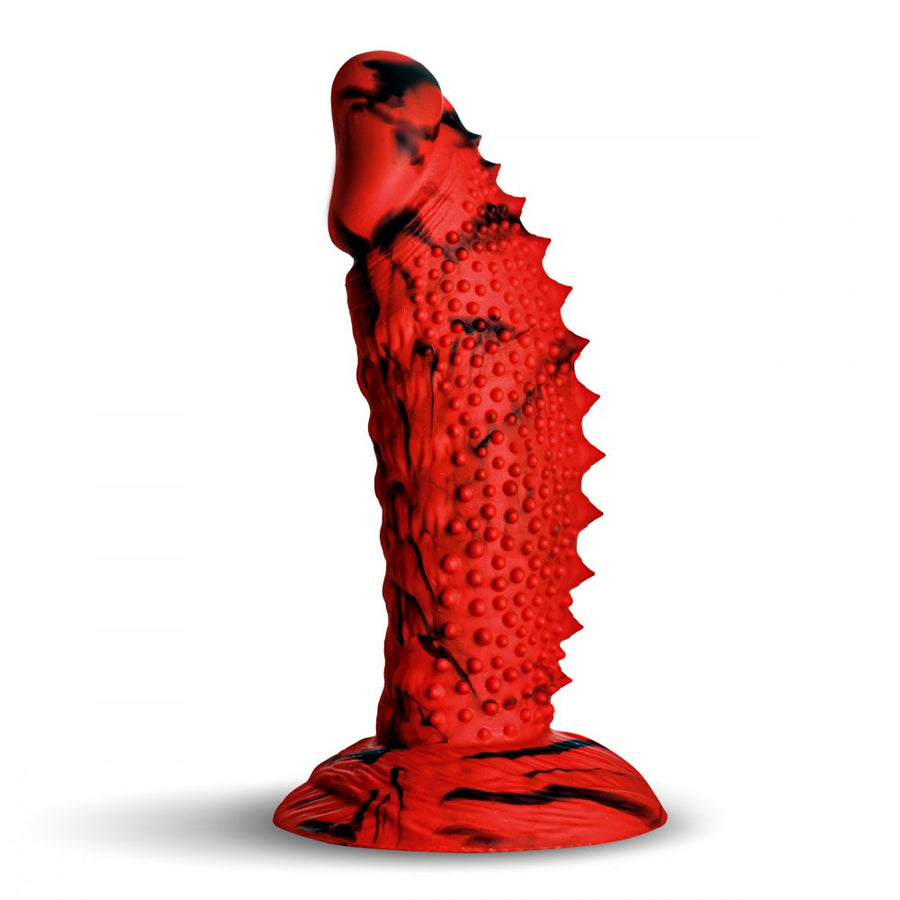
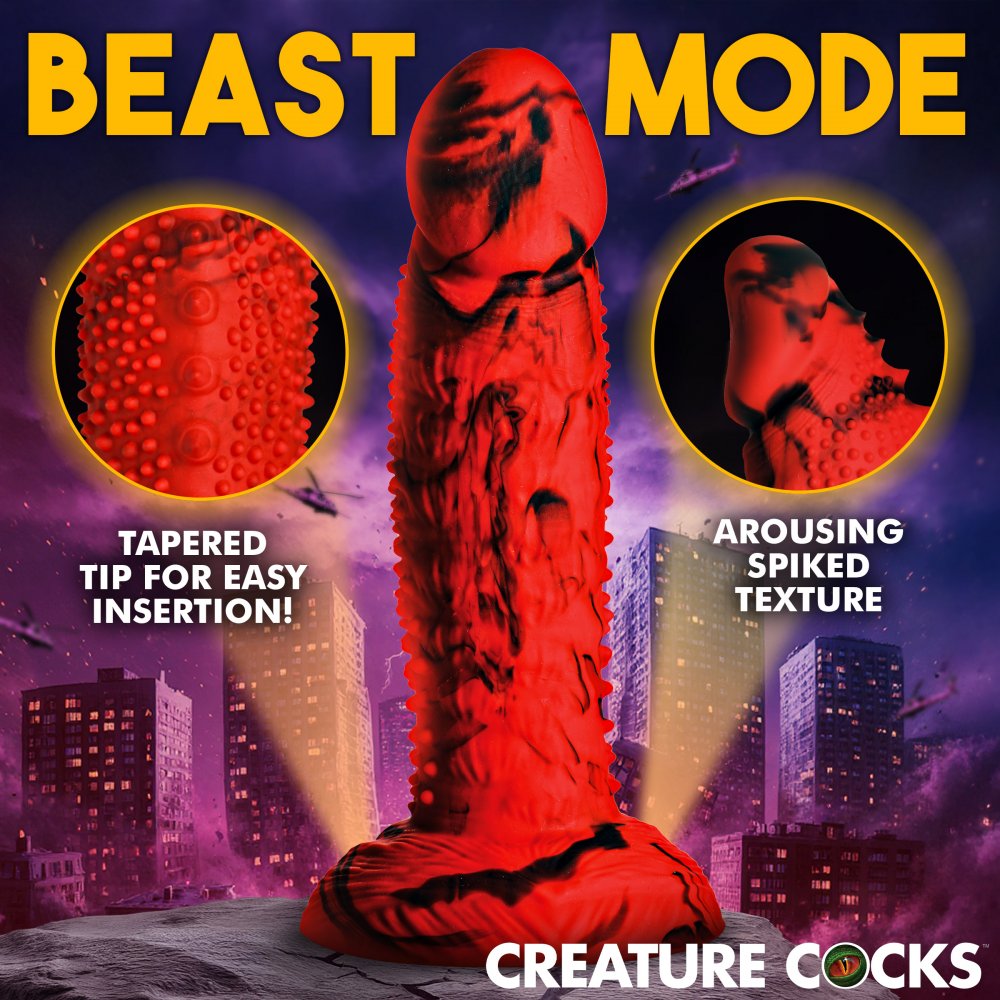
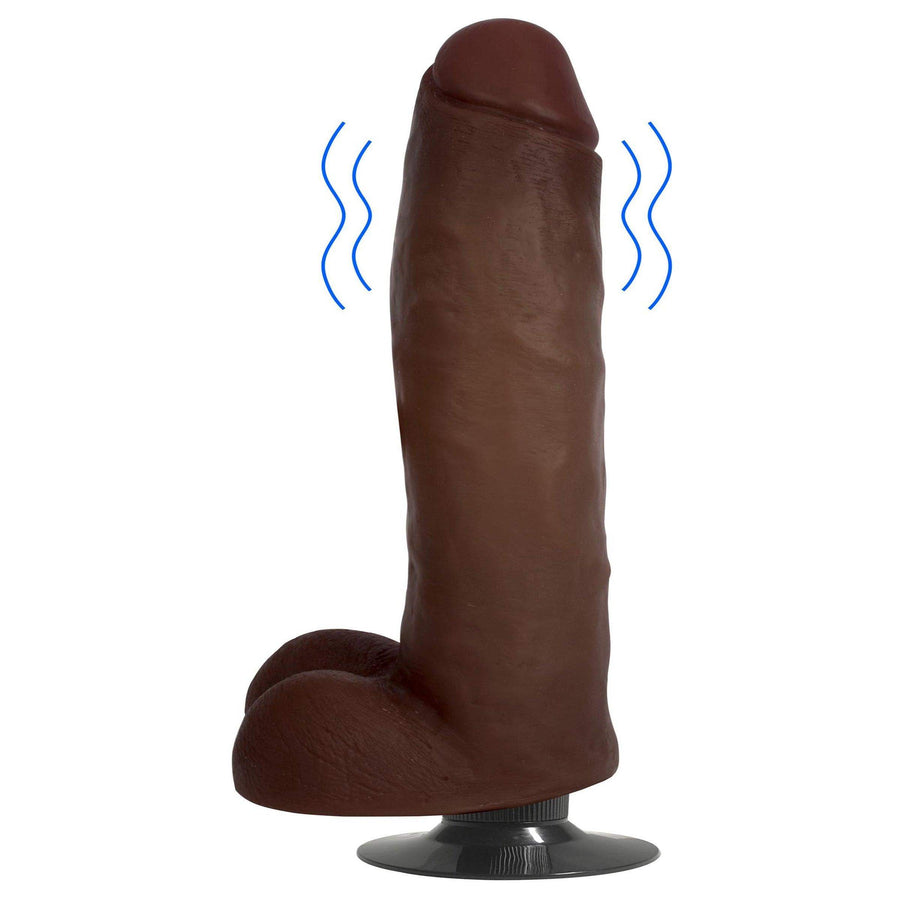
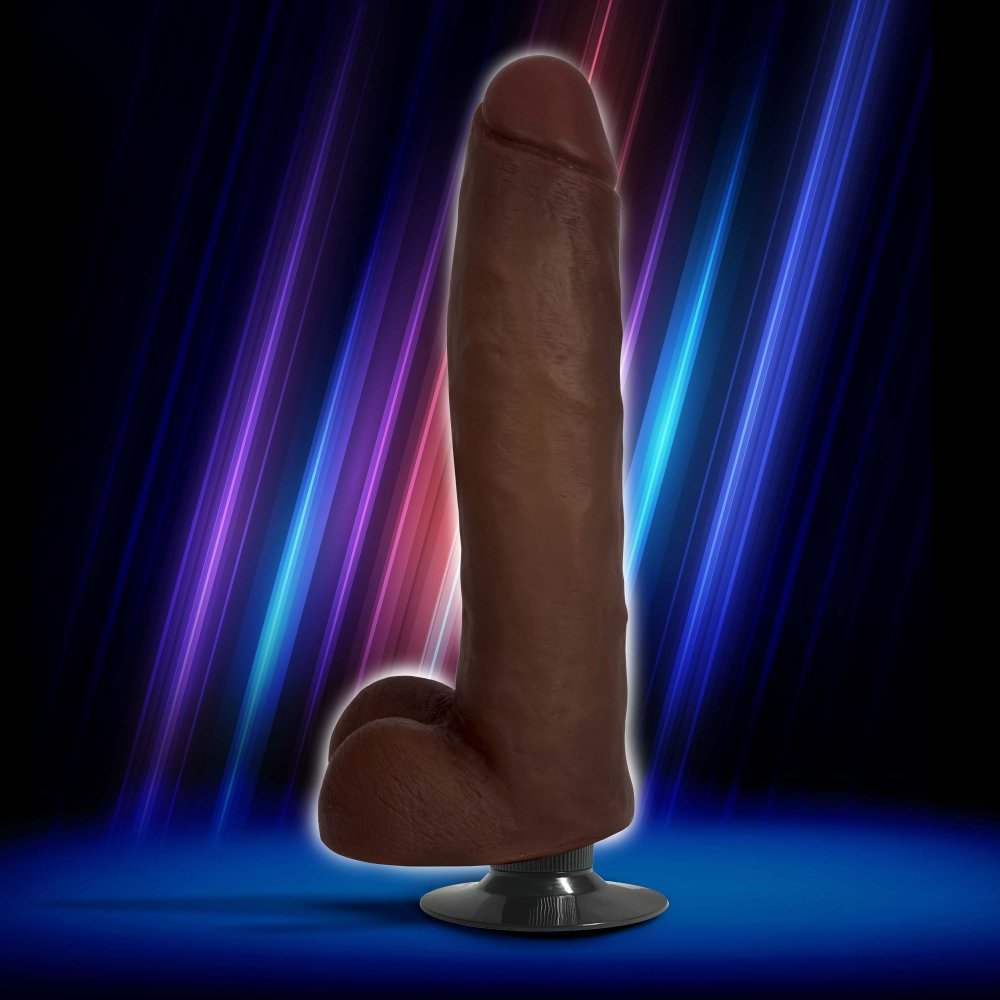
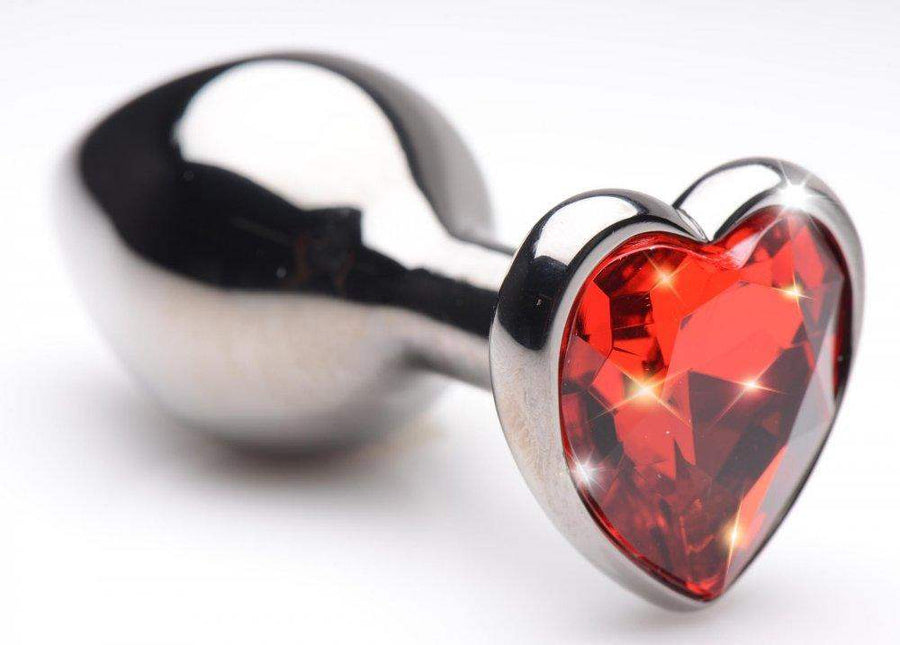


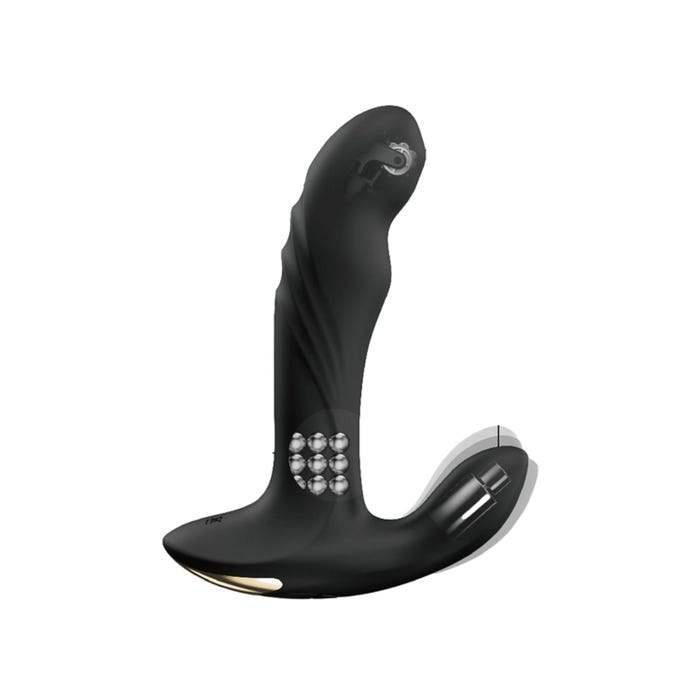



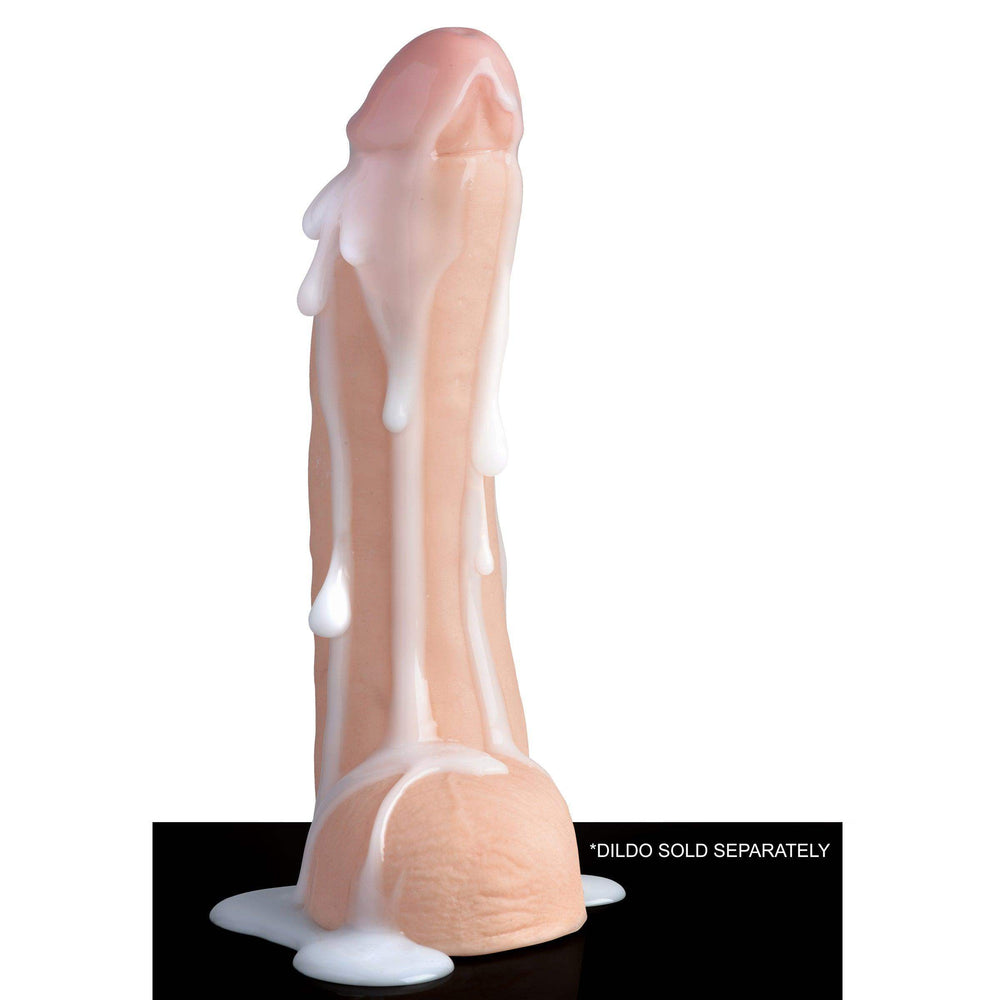



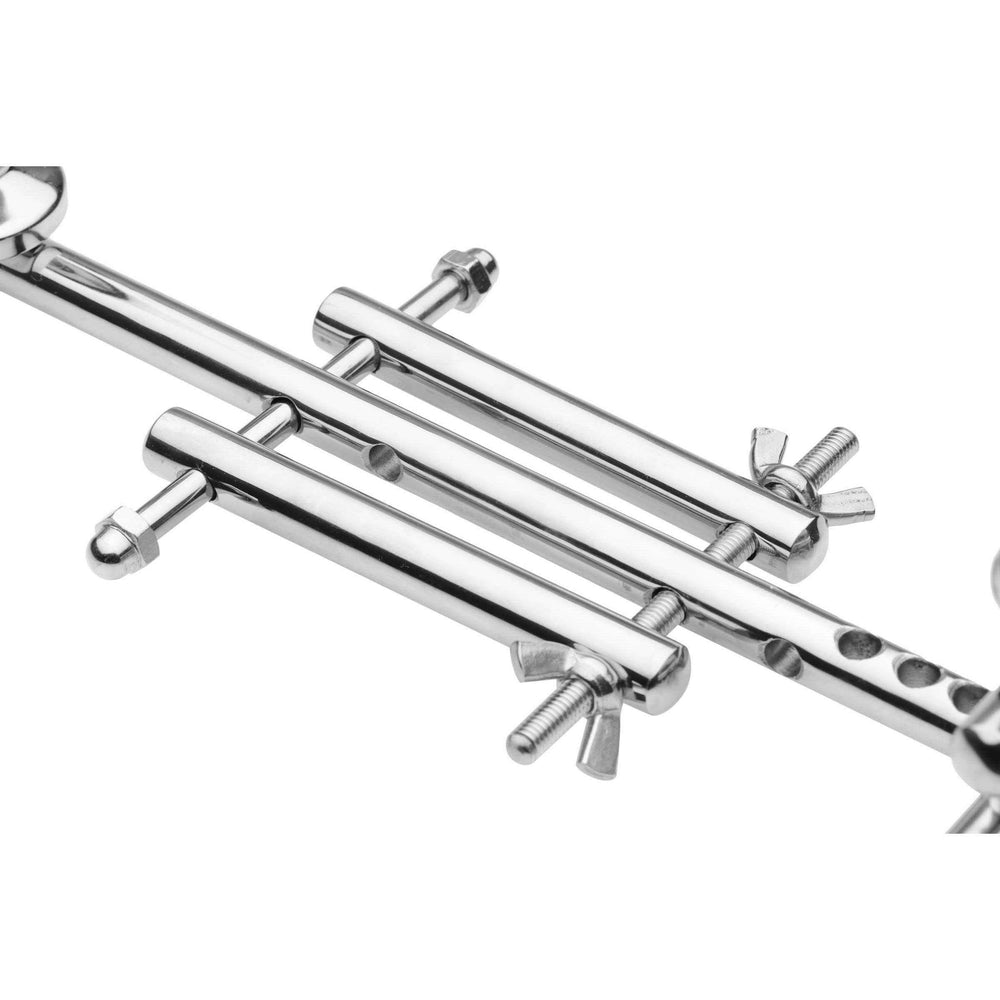
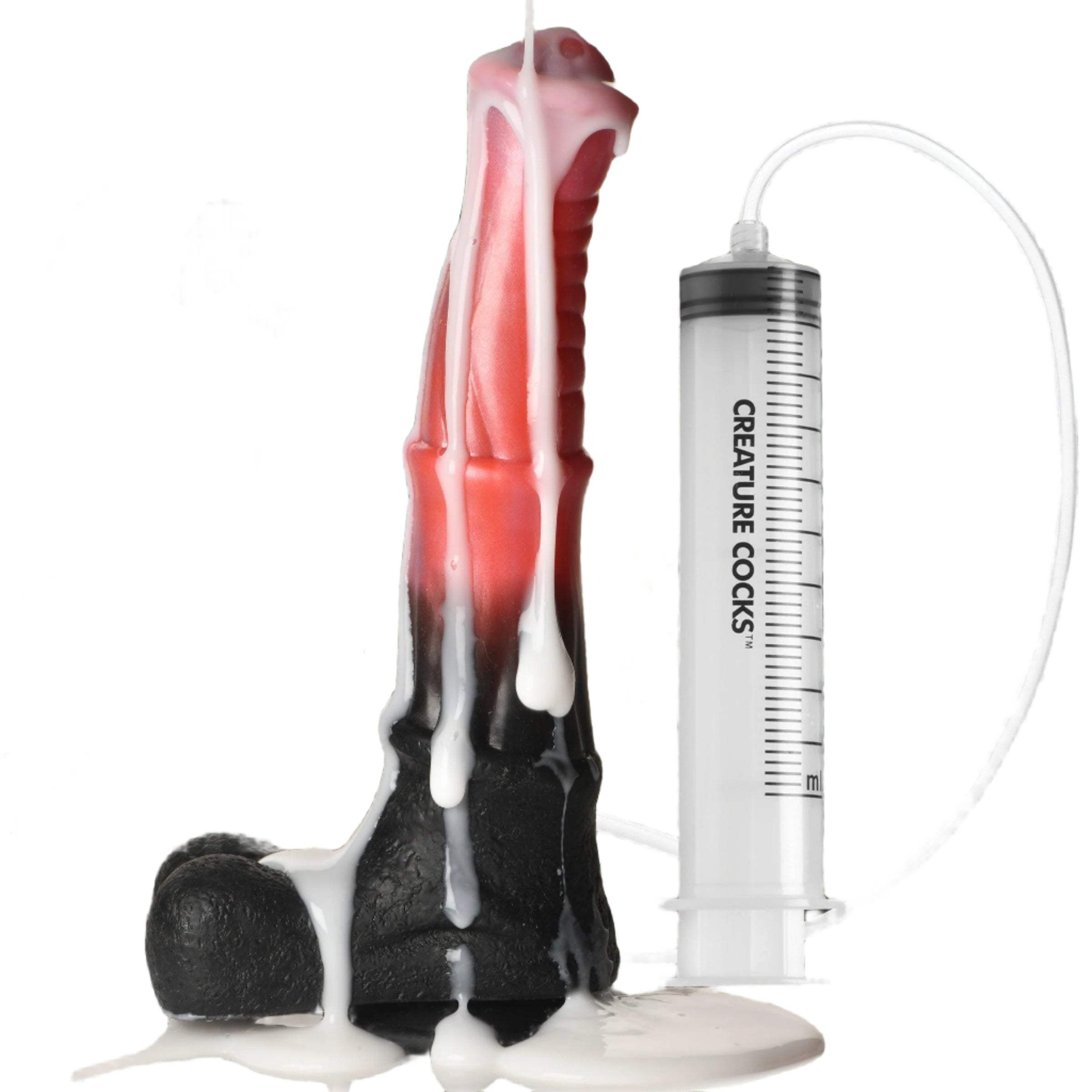
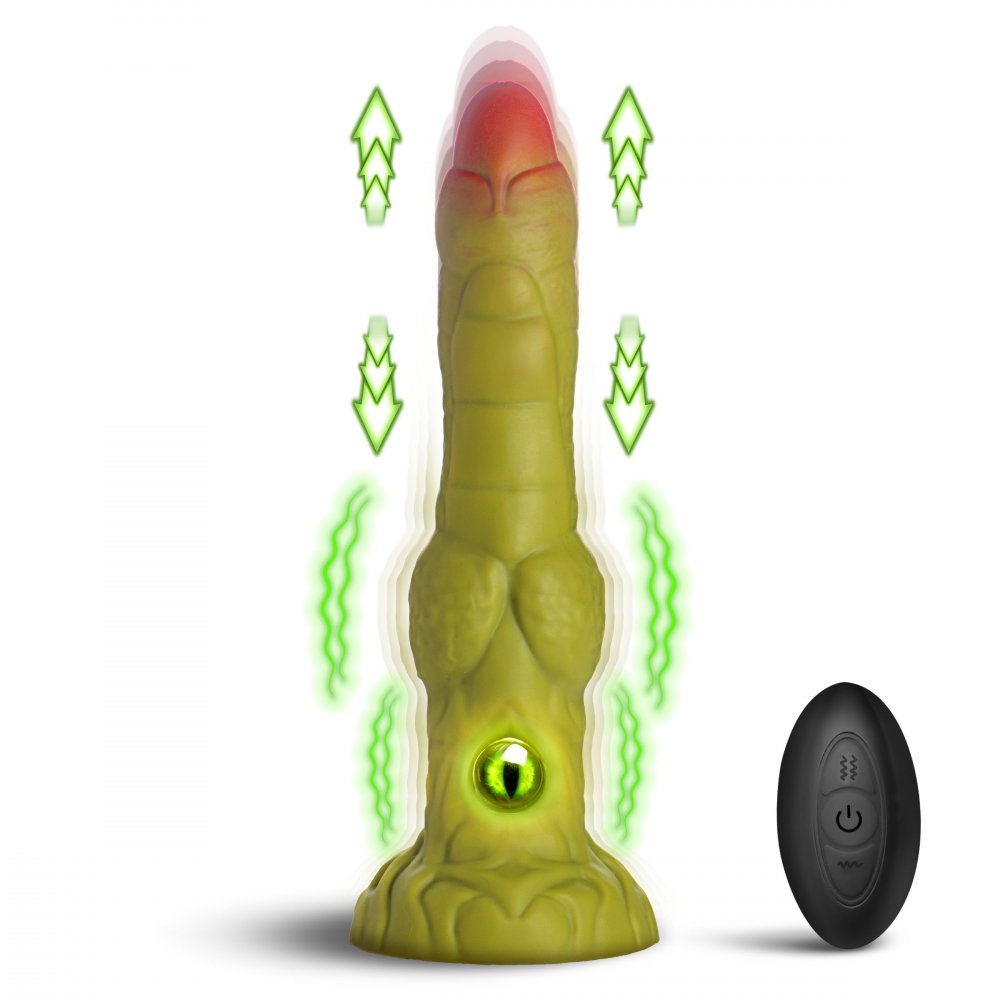
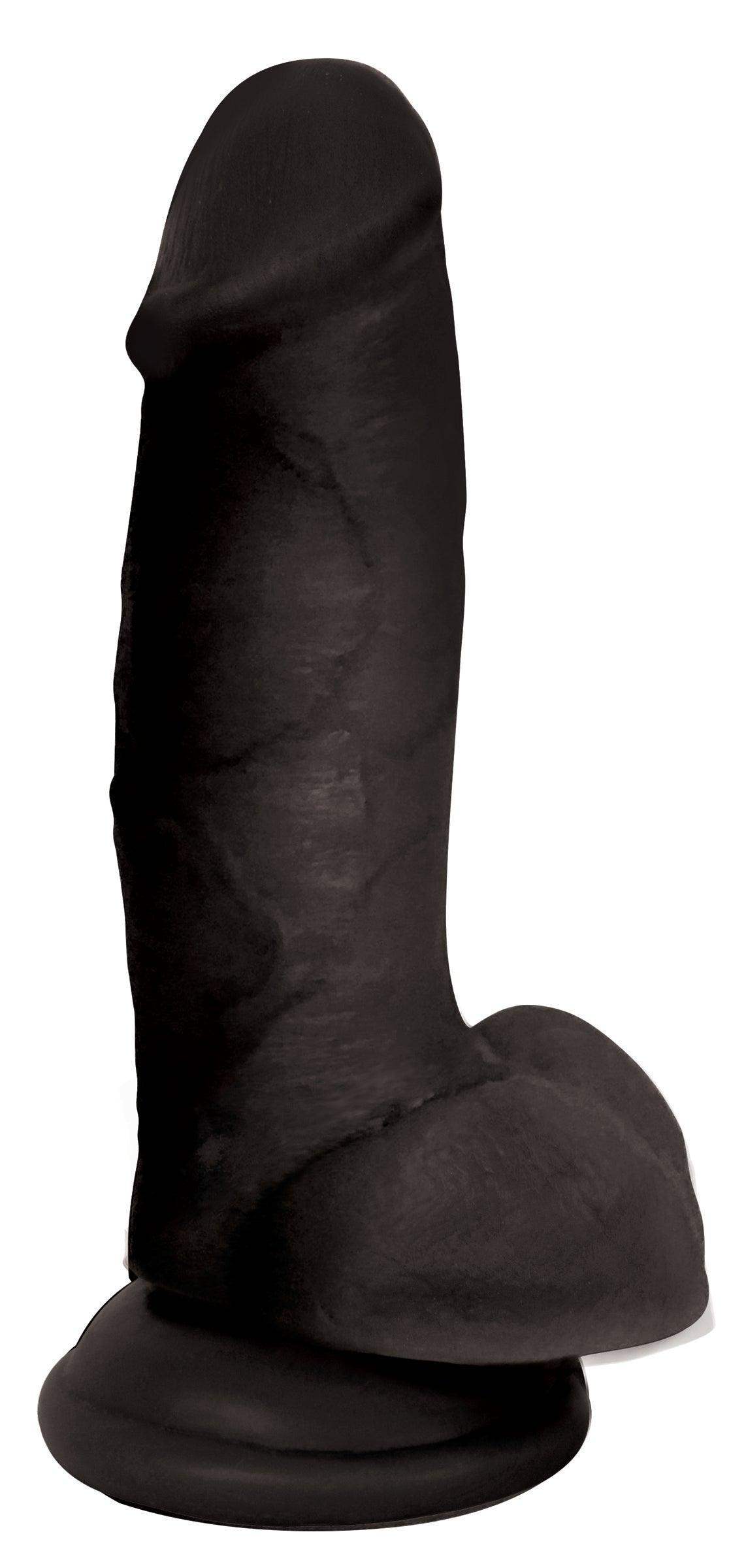




Leave a comment